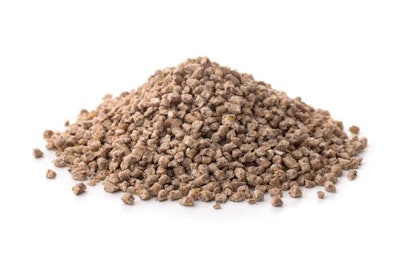
Government looking for private investors to support domestic supplies and reduce imports
Cambodia’s government is seeking private investors to help increase domestic animal feed production and reduce imports.
The country’s Ministry of Agriculture, Forestry and Fisheries (MAFF) recently held a roundtable discussion on animal feed production in Cambodia, after Prime Minister Hun Sen asked local investors to support the animal feed industry.
According to MAFF Minster Veng Sakhon, Cambodia imports almost 50% of its animal feed because it costs more to use local supplies. He said the country imports $250 million to $300 million per year worth of animal feed and livestock-related products, much of it from Vietnam.
Also costly for domestic production is electricity used in animal feed processing.
“Currently there are more than 10 animal feed producers in Cambodia and if those companies make use of their capacity, we have no need to import any feed,” said Srun Pov, president of the Cambodia Livestock Raisers Association, in a Khmer Times report. “However, with the production costs being too high, the companies limit their output when they find it hard to compete with imported products.”
Pov also said local farmers need more education on farming and livestock technical and management skills.
“Farmers or livestock raisers always follow each other and they are not aware of the demand and supply side in the market,” he said. “For example, when chickens fetch a good price, farmers turn to chicken raising and give up on pigs and then the price of chickens goes down because of their oversupply.”
Other efforts to support local farmers
In May, the Khmer Times reported that the Cambodian government has reduced its imports of live pigs from neighboring countries by up to 70% in an effort to support local farmers to increase domestic production.
Tan Phannara, director-general of the General Directorate of Animal Health and Production at MAFF, told reporters at a news conference that there are six companies allowed to import live pigs from other countries, mainly Thailand.
The demand for live pigs is approximately 8,000 per day, of which local farmers can supply 6,000 per day.
The Cambodia government also said it would not allow the transport of live pigs from Thailand to Vietnam. Cambodia separates the two countries geographically.















